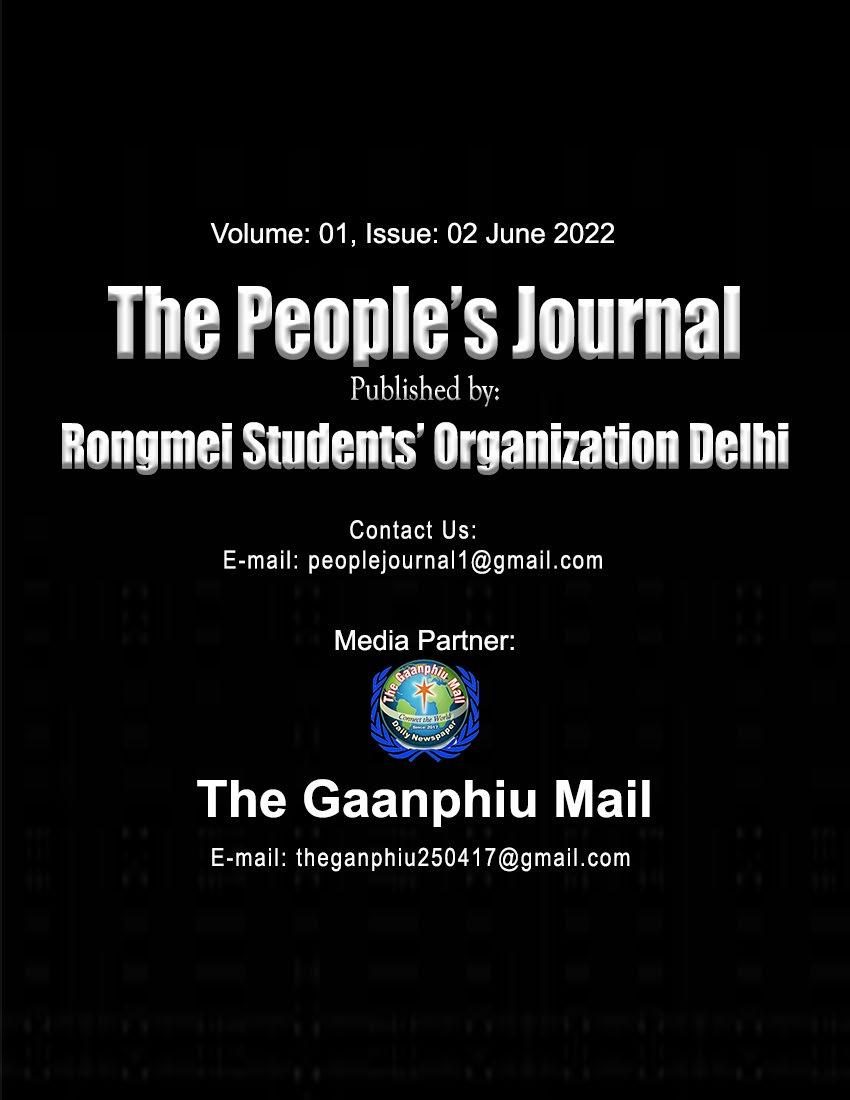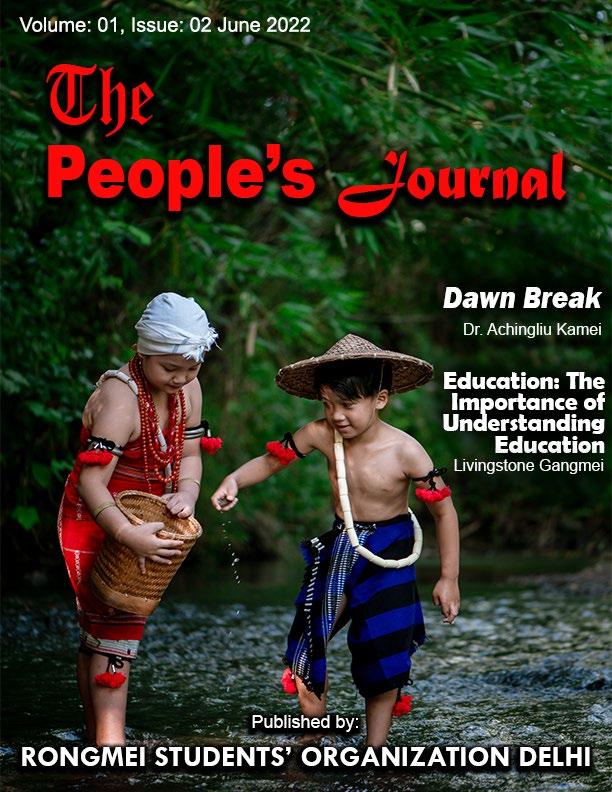
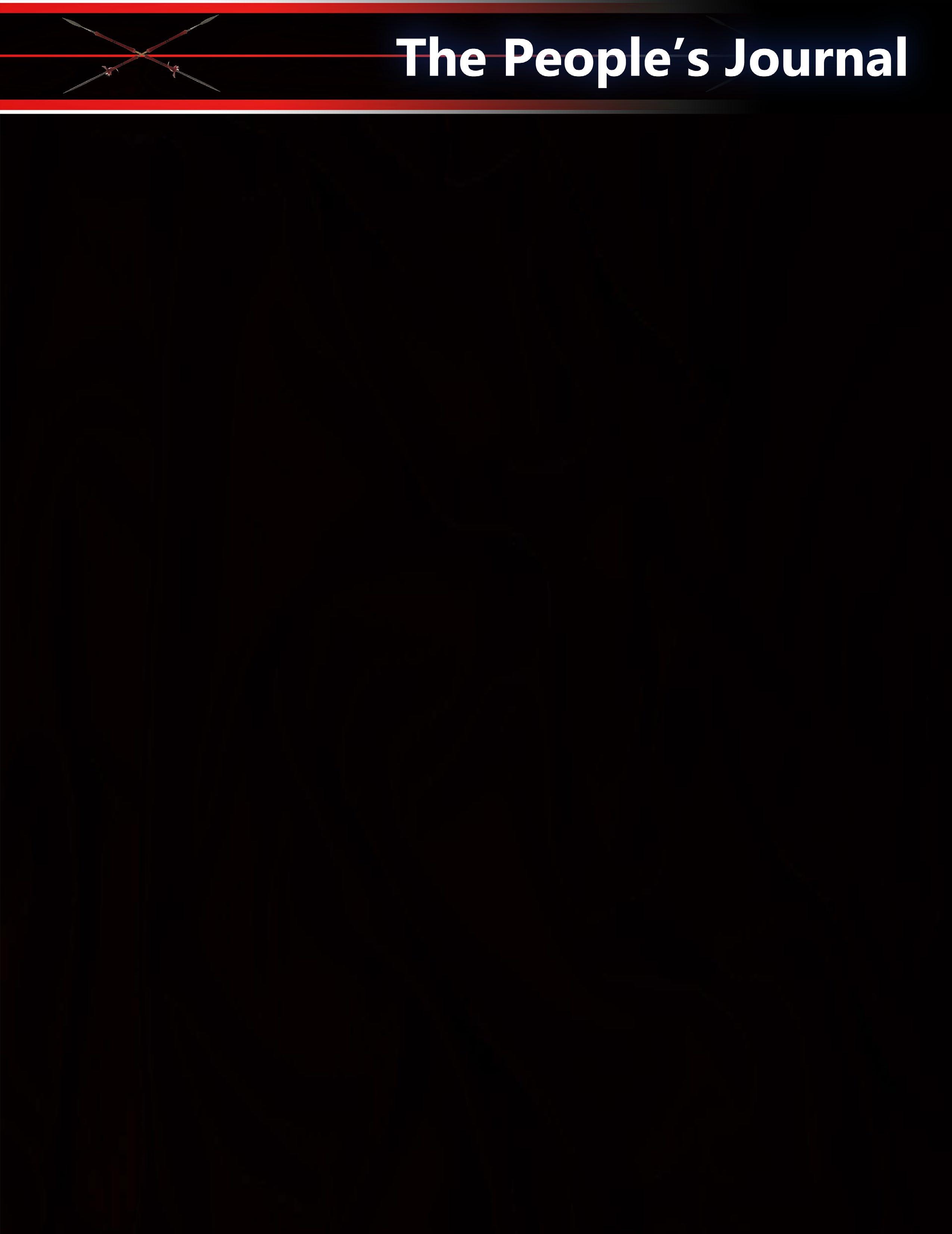



I am filled with exultant to bring the second issue of the People’s Journal. The first issue was received with much love and appreciation by the whole community, particularly by students. The success of the first issue has encouraged our editors and Rongmei Students’ Organization Delhi to work more in means which may contribute to advancing the students of Rongmei Naga and the Northeastern States of India.
I would also like to appreciate all the contributors. Your works will lead and encourage the readers to find an alternative perspective on the issues and things which are significant and have tall consequences on life.
I would like to convey my foremost wishes to The People’s Journal readers, reviewers, and special thanks to all who have supported us.
I genuinely hope that The People’s Journal June 2022 Issue will be of interest and that you will relish and delight in this issue, and benefit from the publication.

Livingstone Gangmei
Editors:
1. Livingstone Gangmei (Editor-in-Chief)
2. Gaipuangliu Gonmei
3. K. Rajauklung Rongmei
4. Pamziuliu Gonmei
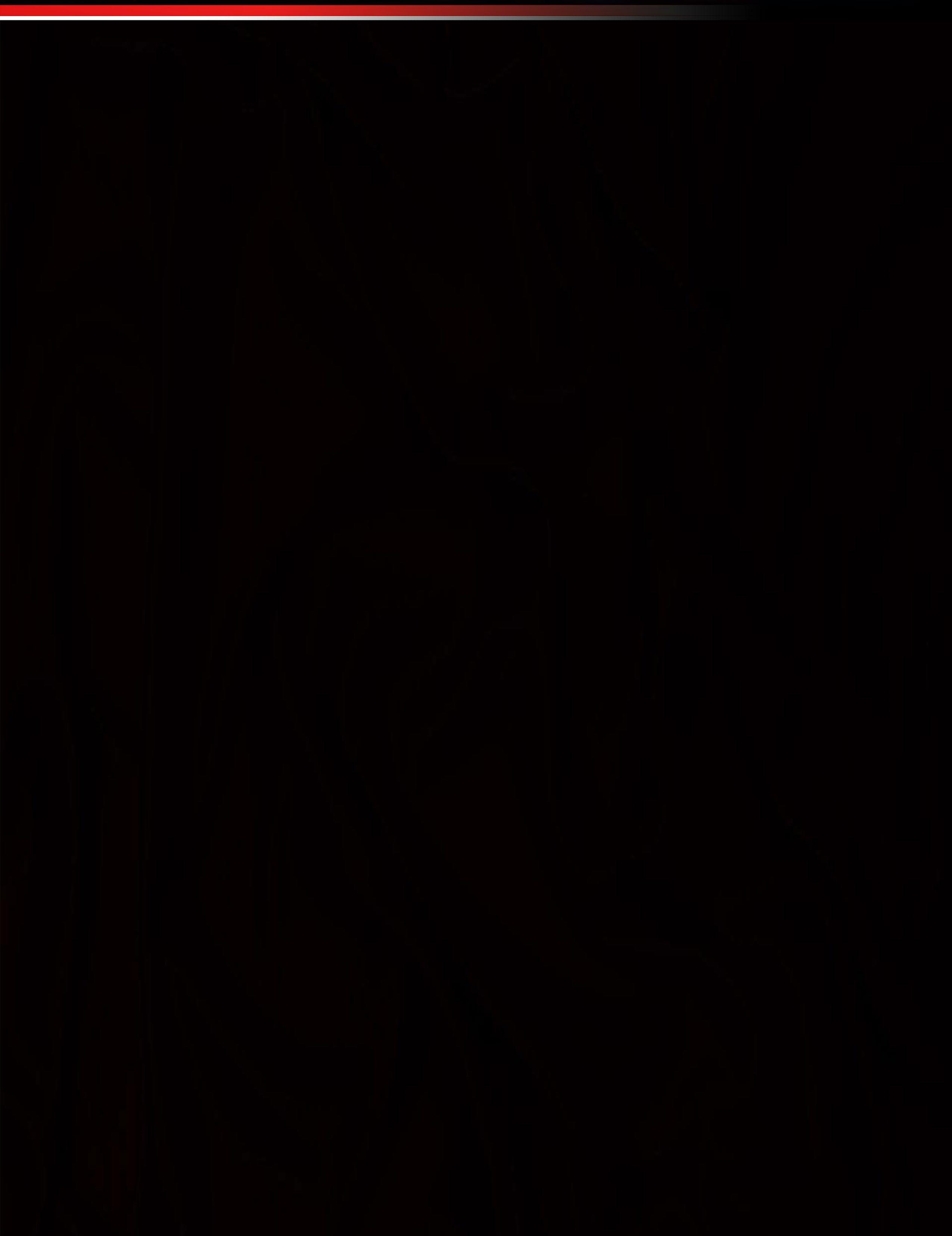
 Livingstone Gangmei, M.A. in Political Science and International Relations, School of Social Science, IGNOU
Livingstone Gangmei, M.A. in Political Science and International Relations, School of Social Science, IGNOU
e-mail: livingstonegangmei77@gmail.com
Introduction
India with an estimated population of approximately 1.38 billion is currently the second-largest country in terms of the number of people behind China. It is projected that India will overtake China as the largest population country within forty years. India has a young population with about 26.16 percent of the Indian population between the 0-14 age category; 67.17 percent between the 1564 age group, and the remaining 6.57 percent of its population with people of age 65 and above ( O’Neil, 2022). India has a positive demographic dividend to reap which
could push and elevate the current economic growth with more boost and speed. Yet, to realise this demographic dividend, we need education policies that are world acceptable which may create an enabling environment and encourage young children and adolescents to attend and complete the basic education which will equip them with skills to be viable employees in this modern age of rapid techno-commercial development era. We are aware of the various limitations that the Union and our respective state governments have with the numerous welfare schemes being undertaken under the limited budgets. The Government of India has allot-
ted an annual budget of Rs 1,04,278 crores ( which is 3.1 % of our GDP of US$ 3.05 Trillion) - which is a rise of Rs 11,054 crore from the previous year. The education budget allocation for 2021-22 was Rs. 93,223 crores ( Chakarbaty, 2022), while our neighbour China has spent 4.2 percent of its GDP of US$ 14.72 Trillion in the education sector ( World Bank). So, we know from the data that the Government of India is spending very little in the education sector, as it has to ensure the burden of numerous necessary welfare schemes undertaken to support the poor downtrodden population of our country.
According to Cambridge Dictionary, education is defined as “ the process of teaching or learning, especially in a school or college, or the knowledge that you get from home” (Cambridge Dictionary). When we hear the term “Education”, we immediately assume the “formal education” system, but it has various forms. Education has its foundation in-home, where the children have their first exposure to the world of disciplines, ethnic rules, cultural norms and basic social behaviour, etc.
Education brings changes in personal abilities, it enables people to acquire new skills which help individuals to do well in life. It facilitates individuals to question or investigate our own considerations and opinions and makes it possible to express them in various shapes. To tackle issues and do inventiveness we first need to gain proficiency with some essential abilities. We require learning and abilities to wind up increasingly imaginative. So education is fundamentally learning of abilities and ideas that can make us
increasingly innovative and issue solvers.
The number of students in India is one of the largest in the world with 250 million students attending school. Here, the number of government-run school students with about 131 million students outnumber those who attend the privately-managed school with 119 million enrolled students ( Kanwa, 2021). With these numbers of students, it is imperative that people are required to and must understand the importance of education in life.
Making an individual free from the constraint and handicaps in achieving a personal goal is the ultimate purpose of education. But, to reach the fine level of an able literate individual, it takes long years of discipline schooling and required constant learning from any institutions which have taken the responsibility of imparting education.
In this Modern world, the purpose of education is to accelerate an awakening of a person’s mindfulness, so that they can contribute to the functioning of society. A learned individual can propose an idea based on the welfare of the common society. With education, people become skilled enough to create societies marked with justice, fairness, and stability.
Education train people to think freely, and form independent opinions and belief. It helps people to distinguish good from bad, and in their judgment, they gain more knowledge and impart it to others.
Education has various types and forms
 Figure: Books of various subjects which taught in Formal education
Figure: Books of various subjects which taught in Formal education
Formal education or formal learning usually takes place on the premises of the school, where a person may learn basic, academic, or trade skills.

In Formal education, learning follows in systematic and structured forms. Formal education is delivered by trained teachers to students. Formal education is governed by government entities or organisations which deal with education systems, and all learning institutions comply with these standards, set by the governing organisations. (Through education, 2019)
Formal education is classroom-based, meaning everything a student learns comes from books and other educational materials with the sole purpose of educating students. Teachers in formal education are trained and licensed under the government accepted standards, only after having qualified certain minimums requirements, they will be allowed to teach students.
It is also known as early childhood learning. The children belong to the age range of 3-6. Here, they learn basics such as writing, counting, reading, etc. In some educational systems, it is mandatory to attend all the preschool levels for all the children, in others, it is not necessary if the children have the skills of reading and writing while entering primary school.
Here, the education systems deal with the fundamentals of maths, reading, and some other basic education levels. This school is
also known as grade school, and it deals with the first few years of children’s education.
In some education systems, it is also known as high school. It is divided into high school education, which deals in an advanced manner with more general knowledge on the subjects, and higher secondary education, it is here where it starts to focus on education relevant to employment after mandatory education. Students after graduating from here, can either opt to find employment with the knowledge they have, or they can seek further education specializing in their field of choice.
All optional formal education after second-
ary education falls under higher education post-secondary education. These include undergraduate and graduate programs, medical schools, community colleges, vocational schools, and more. This education is provided generally to help students seek education for the specialized field they wish and want to in, but those people who simply wish for further study, opt for this education. The highest level of education one can pursue is post-graduation education which includes M. Phil, and PhD.
Most of us has taken at least one form of formal education in our life. The fundamental goal of formal education is to ensure that everyone is literate, skilled and smart enough to make their own decision and decide the choice of field in which they would want to work once they become adults.
• Educational models are organized and
course contents are up to date.
• Learning processes are structured systematically.
• Intermediate and final assessments are ensured to advanced students to the next learning phase
• Its achievement and certificate are recognized formally.
• Once students have completed their formal education, it is easier for that students to access jobs.

• The formal education system is more costly and rigid as compared to other learning forms.
• Students may adopt bad habits due to the presence of bad peer influence in the classroom.
• Some lazy students may waste time and fail to properly learn in spite of motivation from professional teachers.
In informal education, the education system lacks the structure and standards of formal education. Here, the learning process occurs outside the classroom, whether in educational locations like libraries and museums or in non-educational locations like at home or non-educational organizations. In an informal education setting, education is completely optional.
Informal education may be a child learning from parents (for example: how to ride a bicycle, how to play football or how to prepare a meal.) People get an informal education by going to the library and reading many books or from educational websites. ( Passion in Education, 2019)
Informal education is when you do not use any particular learning method and are not studying in a school.. In an informal education setting, conscious efforts are not involved. It is neither preplanned nor deliberate. It can be learned at home, hotel or even in the marketplace. Unlike formal education, informal education has no set curriculum, nor it does not have any fixed timetable. In-
Figure:
which enable interest leaner to pursue skill through informal education
formal education settings consist of experiences and living in the community or family.
• In an informal education system, learning can be done any time anywhere from your daily experience.
• Involve activities of reading books from
libraries, the internet, social media or getting assistance from an informal teacher or trainer.
• It doesn’t require hiring experts as more of the professionals may be willing to share their knowledge with the public through the internet and social media.
Disadvantages of Informal Education

• The learner may lack confidence during the process of learning.
• Discipline, attitude and good habits are absent.
• The unpredictable result may simply waste time.
• An inappropriate technique is being utilised.
Non-formal education refers to personal and social education, with structured programmes specifically designed for improving the range of skills and competencies, outside any formal educational curriculum. This type of education happens in places such as sports clubs, youth organizations and drama and community groups where people meet, for example, to play games, undertake projects together, discuss, go camping or make music and drama. In this type of education, the achievements are usually difficult to certify, even if their social recognition is increasing. ( Parliamentary Assembly, 2000)
Non-formal education characteristics are:
• It is always learner-centred
• It is ideally accessible to everyone
• Should be voluntary
• It is about learning life skills and preparing oneself for an active citizen
• It involved an individual leaning along with a group and leaving with a collective approach
• It is always based on experience and action,
• The need of participants is considered while organising the learning process in the non-formal education.

Students performance and results are impacted by how parents or teachers can motivate them. Students’ behaviour and attention as well as the energy which are necessary to complete tasks are provided by motivation. Motivation is necessary and it helps sustain activities over a period of time. In education, motivation has a variety of effects on students’ preferences, behaviour, and results. Motivation encourages and urges us to perform an action, without it the completion of any task or action can be hard or even impossible ( Silva, 2020)
If a student develops or has a negative emotion such as scornful, fear or dislike towards their teacher, this attitude of children can negatively affect their attitude toward the subject as a whole which is taught by that particular teacher. Even in the process of teaching, if a teacher shows a preference towards certain students or uses humiliating and derogatory language to non-performing students, it can drastically lower the student motivation in education. Teachers with personality attributes such as kindness, and optimism, who give necessary positive feedback, and encourage
students when they are failing can positively affect students’ motivation to learn.
Teaching methods have a huge impact on maintaining the motivation of students’ education. If educators use different and innovative methods, it helps in retaining students’ curiosity and engagement, It creates diversity and prevents students from getting bored. Student freedom to choose a place to sit, and with whom to sit in class can help. Students of different backgrounds and learning abilities are going to be present in a single class, it is likely to have different styles of learning. Thus, an educator or teacher is to meet these needs by applying different teaching methods. Where innovative teaching methods are most essential is in an aspect of STEM (Science, Technology, Engineering, and Mathematics) subjects, the teaching must ensure that the skills or knowledge learned can be practically applied in real life.
Students’ motivation to learn is affected by various parental habits, particularly intrinsic motivation. Tasks of parents in helping children include: inquiring about their children’s day listening actively and attending to their queries showing interest in the child’s learning material when education institutions call for parent meetings, then making it sure to attend for completion of children’s homework or study for tests must constantly be encouraged by parents
It is proven that motivation can be improved by reading. Parents’ habit such as reading to and with children helps them develop literacy faster than talking does. However,
reading comprehension levels can determine students’ success in later school years.
Learning is poor when there is a lack of security in the classroom, the lack of stability and security at home has a negative impact on children’s motivation in education. Children who live in a family with both parents, usually get better grades on average than those children who don’t. Family disruption and conflicts result in poorer academic performance.
Some examples include:
• Single parenting; Divorce
• when both the parents are loss
• having a bad relationship or not having contact with the biological father or mother
• children frequently move from one home to another
As a result, in certain instances, various additional support may be needed from schools to help students with their issues.
Learning environments include classroom or school environments, and this is another factor that affects motivation in education. The school environment refers to different regulations and norms which determine an overall learning climate in the school. Students feel safe and secure in a positive school environment, it helps to meet their basic needs and it provides an optimal environment for students to build healthy social relationships. When a learning environment has many classes with serious subjects can result in lowering motivation in education. A Learning environment must include fun
 Figure: Library of Higher Education or Post-Secondary Education
Figure: Library of Higher Education or Post-Secondary Education
elements, which can help to ease the atmosphere and improve motivation and results. School allowing enough time to play and rest can also have a positive effect.
The influence of peers on children increases as they grow older. Therefore, problems and conflicts with peers can make students feel less secure about their social status among peers, increase their stress levels, and lower motivation in education. Keeping an eye on any conflicts, bullying, and other peer issues can prevent serious problems.
It is clear that education is important for all well-round development and making a world a better place for all the people. Education helps an individual while making an important and critical decision, which have long term ramification and repurcousion for the individual and society as a whole.
Education is a complex process consisting of various forms, namely Formal education systems, Informal education systems, and Non-formal education systems. Each form of education has its advantages and disadvantages. Formal education has various stages: Pre-school, Primary School, High School, Secondary school, Post-secondary school or Higher education. Each stage is designed to equip students with competent skills and improve their learning with each different stage.
The purpose of education includes for instance, such as enabling an individual to think freely and form independent opinions and faith. To understand education is to understand the purpose of education. It is true that education motivation for children is
impacted by the influence of parental habits, teacher personalities, teaching methods, and learning environment is more. Therefore, it is necessary that an educated adult help to create an atmosphere where learning motivation is always high or at least maintains the willingness to learn new skills.
It is the responsibility of the Government of India and respective state governments to invest more in the education sectors for rapid improvement in people with able skills, which will enable India to reap the benefit of the digital-led techno-commercial trade. The parents, teachers, educationists and literate adults have the responsibility of encouraging the children, adolescents and youth to attend the formal education system, join non-formal education programmes and learn the much necessary skill from informal education.
1. Aaron O’Neill (19 January 2022). Age Distribution in India 2010-2020.Statista.
https://www.statista.com/statistics/271315/ age-distribution-in-india/
2. Roshni Chakrabarty (1 February 2022). Education Budget 2022 increases by 11.86%: Major areas of union budget allocation, schemes covered, new plans. India Today.
https://www.indiatoday.in/business/budget-2022/story/union-budget-education-budget-2022-increases-by-11-86-major-areas-of-budget-allocation-education-schemes-education-plans-1907451-2022-02-01
3. GDP (Current US$)-China. The World Bank Data.
https://data.worldbank.org/indicator/NY.GDP. MKTP.CD?locations=CN
4. Cambridge Advanced Learner’s Dictionary & Thesaurus. Cambridge University Press.
5. Sanyukta Kamwal (24 November, 2021). Number of enrolled students in Inida 2017-2018, by school type. Statista.
6. Everything you need to know about Formal Education. Through Education
7. Types of Education: Formal, Informal & Non-formal. Passion in Education
8. Parliamentary Assembly (24 January 2000). Recommendation 1437 (2000) on non-formal edu cation. Council of Europe. CM/Del/Dec(2000)698/3.1)
9. Vitor Silva (21 November 2020). 8 Factors that Affect Students’ Motivation in Education.
 Dr. Achingliu Kamei
Dr. Achingliu Kamei
The columns of rocks, the cairns, the memorial stones
The sacred banyan tree, the sacred pear tree
The land, the river, the mountain
Hosts to a civilized way of life long since departed, Honour, respect, covenant-making
Refined and strengthened from time immemorial
Most of it was lost by the collective efforts of the ‘Great Masters’, the ‘Civilized Savages’ Lost in the silence of ‘awakening’, from ‘darkness to light’
To ‘modernity’ and blown away.
But again, the rocks, the cairns, the trees of our ancestors
Cry out to us, loudly, clearly, forcefully, patiently
Come back to your memory of the cultural roots
Come and rest on my stones, converse again with civility
Sit down under my shade, pause a moment to think
See the sacred flower blooming again
Seek not the things offered by capitalism, materialism
Hoarding is not in your nature
Giving and sharing is your way.
The strains of the beautiful inrah
May it awaken the plants again, regenerate your soul
Release consumerism, selfishness, Sing again with the ancestors
Bubbling again like the brooks, the rivulets Call back the clouds, the rain, and the birds
Make a beautiful song
Forget how to negotiate with force- with guns
Forget the alien savaged ways- that’s not your ways
Bring back the art of negotiating with words and understanding
The ‘Civilized Savages’ had you under a spell
They struggled with arms for profit, for land, for power
Leaving destruction behind every footprint of theirs
The shards of shattered culture and tradition
Pluck it off from your wounded soul
Let the ancestors’ river of truth wash you clean and heal
Restoring your equilibrium.
Listen to the whispers of the autumn leaves, Their memories are truths
Listen to the truth in your true name, given name – invaluable stories
Not in the names given you by the ‘Civilized Savages’
Your ails and ills are begotten by the alien virus and food
Your organic foodways are the best
‘Modern dreams’ thrust on you in a blink
Shed it. Shed it.
Listen to the song of the river stones
Come back to its fertile banks
Wash your foreign dreams away in its cool waters
The fever will finally go.
Be steady as the rock, never stop flowing like the river
Set roots deep again like the Mighty Tree
Our ancestors showed us the way; trust the trail
Hold your head high. Your ways are the civilized ways
Food for all. Land for all. Open barns. Lunggai-chinghkhiumei
Compassion always accompanies riches
Chakhuang-champoumei, putting others before you
Gansu-ganthau’s wisdom
Caring for fellow beings, the community stands together
When difficult times are upon them.
Look up. Stoop no more. Be ashamed no more. Held your head high Wash the grime of imposed history (s) away and make your soul whole again
Look no longer through the lens of the ‘Civilized Savages’ Shed their cloaks of lies and guiles
The Dawn is breaking.
(Dr. Achingliu Kamei, a short story writer, poet, and ultra-runner is an associate professor at the University of Delhi. She is also the author of Naga Tales Dawn; Songs of Raengdailu; and Liangtuang Pu. Forthcoming books are Headspace; Naga tales Morning Blush and Roots and Wings, a collection of Haiku and Haibun.
Email: Achingliuk@gmail.com)
Gaichanglungliu G. Kamei, IRS

And we are stopped, mid strut.
Fancy designer skins and pelts, The friendly cloth bag did replace. The kind we daily wash and dry. Mine did.
Chiffony nine yards and fancy silks, Now humbled by the airy cotton ball. ‘A single piece or two, minimal dressing’ we’re told.
Big diamonds bright adorning lobes and wrists, Exiled to even bigger vaults. Better no crevices for viruses to thrive, they say.
Painted reds on talons long, a no-no so they say. They’re perfect shields for dirt to hide! The frequent handwash more a must, we know.
Pouty lips, plum-deep and fuschia bright, Now sulk behind the masked layers. We no longer can be seen! they cry.
Shimmering waves of glossy ‘chemicaled’ hair, Now bound up nice and tight. Tis best to daily bind and wash, you see?
Pricey red based pointy tips now shelved, How can I leave them out the door? I say.
My friendly flip flop takes over.
And I am stopped, mid strut.
Gaichanglungliu G. Kamei, IRS

Rational beings called me Mother Nature
But there is no motherly love nurture
They said, the wisest of all creations is man
Yet their behaviour showed they’re insane
I’ve shouted a shout of utter helplessness
Towards the inhumane acts of carelessness
I’ve cried a cry of many broken tears
But no rational beings heed or care.
All creatures enjoy the springtime of my life
Taking shelter, rest and relaxation from their strife
Rainy season avails, and I am all green People captured my body and display in screen Flowers blossom, happy are the men and bees Aromas carried by wind, environment glees
I provide fruits and the beings were fed But came no gratitude, I accept that as fate.
Spring time’s gone, I look old and grey
Autumn’s here, my leaves fell but I pray Human cut down my trees irrationally
I am so helpless and I cried so bitterly
Is there anyone who stood by me and loved me?
Will someone hear my cry and stop felling me?
In the name of survival, human destroyed my life
They thought that it’s needed for development in life.
Don’t you know that the earth is almost unliveable? Diseases, Green House Effect, Climate change, available
When I am so helpless, when all my leaves decay, you set me ablaze
Because of you, the wildfire spreads, destroying me, I am amaze
I’ve shed thousand tears, hoping men will realize Praying to God in my helplessness, willing to suffice
My whole world shattered with no hope, by your deeds, Oh! Human, be sensible and stop these nonsense leaps.
Do I still have hope after these inhumane destructions?
Yes, there’s a beautiful rainbow after the darkest storms. I will spring forth my leaves, bloom new flowers and give hope for humanity
Give hope to spread hope.
Champoumei DangmeiZeppuh Gangmei

Kap tiki nzian ranv, Nuicpat tiki hougay ranv, Lunghpuamc tiki kazi ranv, Ai latsa pat khang maek khe Damchuilou the dampapui rui.
Tinggaanc patzai nangchamv thayni, Zipkey Zai nangkhwan nkingc ni, Tugay jangvgay tuti nangta tu nchamc ni, Lungning kadwn ding dat mak khe Ki nzianmei duiriang luangtaek maek.
Apin Agah duithuak luangtaek mak kum, Bw le neih rui souctaek mak kum, Gairiamang Guilianei ta amuc thui mak kum, Nangta ningtan thui mak alung rui Tari the nangkhwan gaymei ta.
Gaymei pangkhou gayliangmei, Niamhmei pangckhou niamliangmei, Ndeihmei pangckhou ndeihliangmei, Akhatna swmei Rav baansiam kiu nang dithe. Chariu pwan khou alunglat dinc guang e.
Lauphwnsuanh nruai khwan rui nangta ti ningtou lou, Ntwn tingmik rui nangta nzianmei ti mbu lou, Niangzay nthw khwanrui nangcham gaymei phungcguang lou, Chakaan tingzyn le nangta nkhwan bam ni Aram mei taukhwan gaymei khou.
Luangraeng kailuang namvdai kumc, Gahdai chingc nkauh chuy kumc, Kasuakpwang hougay chuy kum, Chaphumeilu nangram gaihei
Poujiabthai Zeppuh Gangmei Ph.D Research Scholar, Department of Law, North Eastern Hill Univer-
I’ve been blessed to live a silver years
Could it be a more blessing to see you?
The joy of seeing you is inexpressible
No reason I found, but my heart rejoices
When I’m silent, my heart utters more truth
I’m blessed to see God’s delightful creation
To see the glorious first flush of morning
To mesmerize the magnificent landscape
It springs up the fountain of imagination
But, it all stops in the joy of seeing you
I’m blessed to see a bountiful colour
Double rainbow on a bright rainy day
Flock passing by on a pinky cloud evening
The clear cerulean blue of October heat
But, it all stops in the joy of seeing you
Once I was at the top of a majestic mount Where I’ve got to breathe and refreshed my lung
Thrilled while climbing by the brief weather
Recalled the bliss of being above the cumulus cloud
But, it all stops in the joy of seeing you
I have also been to Pine Hills in the west
Riding down the winding country royal road
Chilling wind, biting cold, nipping at my face
Passed by a still lake amid grassy hillocks
But, it all stops in the joy of seeing you!
A glimpse of different tribal cultures and traditional dress of Northeastern states of India worn by childrens.
Photographer: Ningkhalen Hungyo
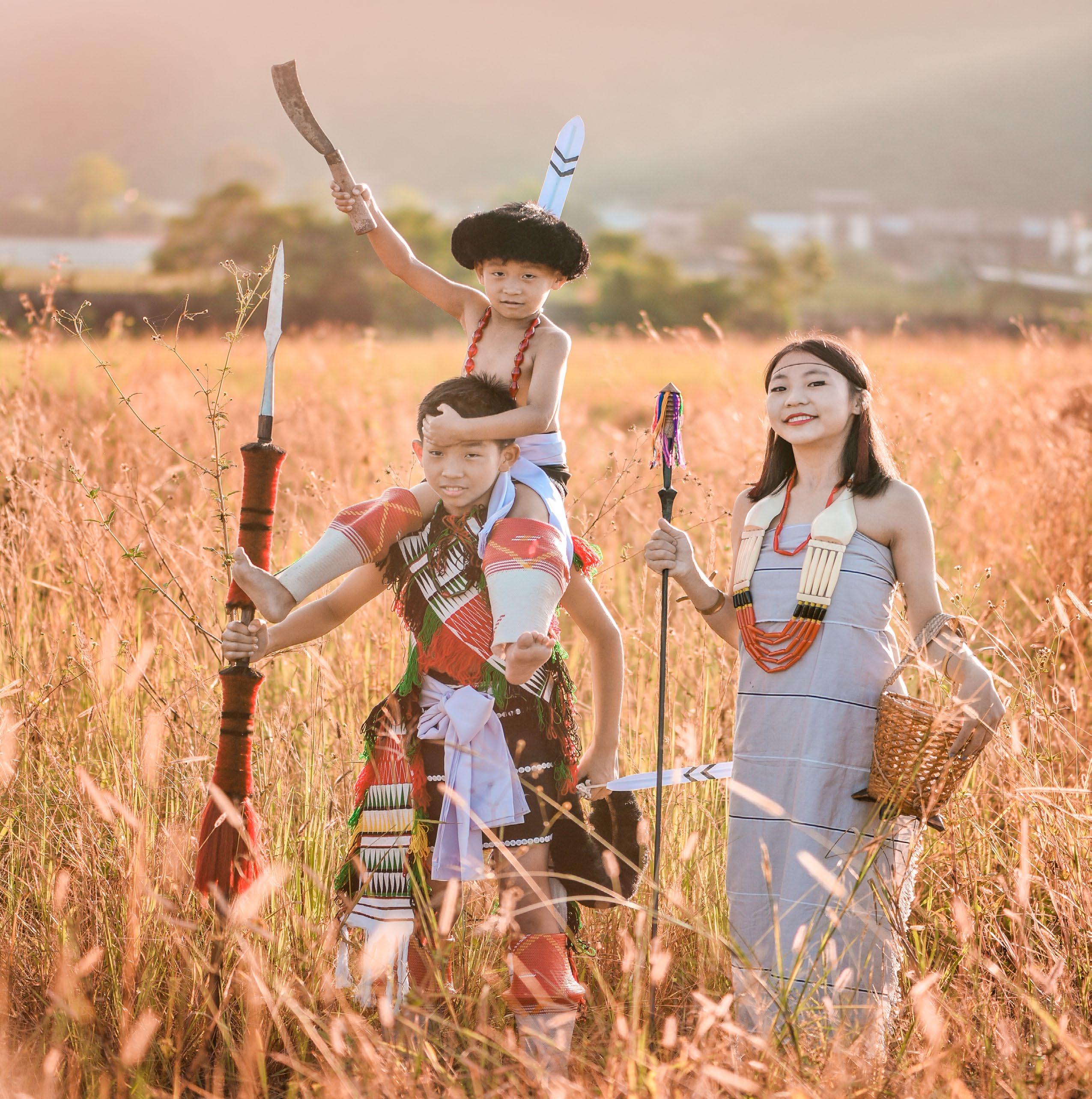

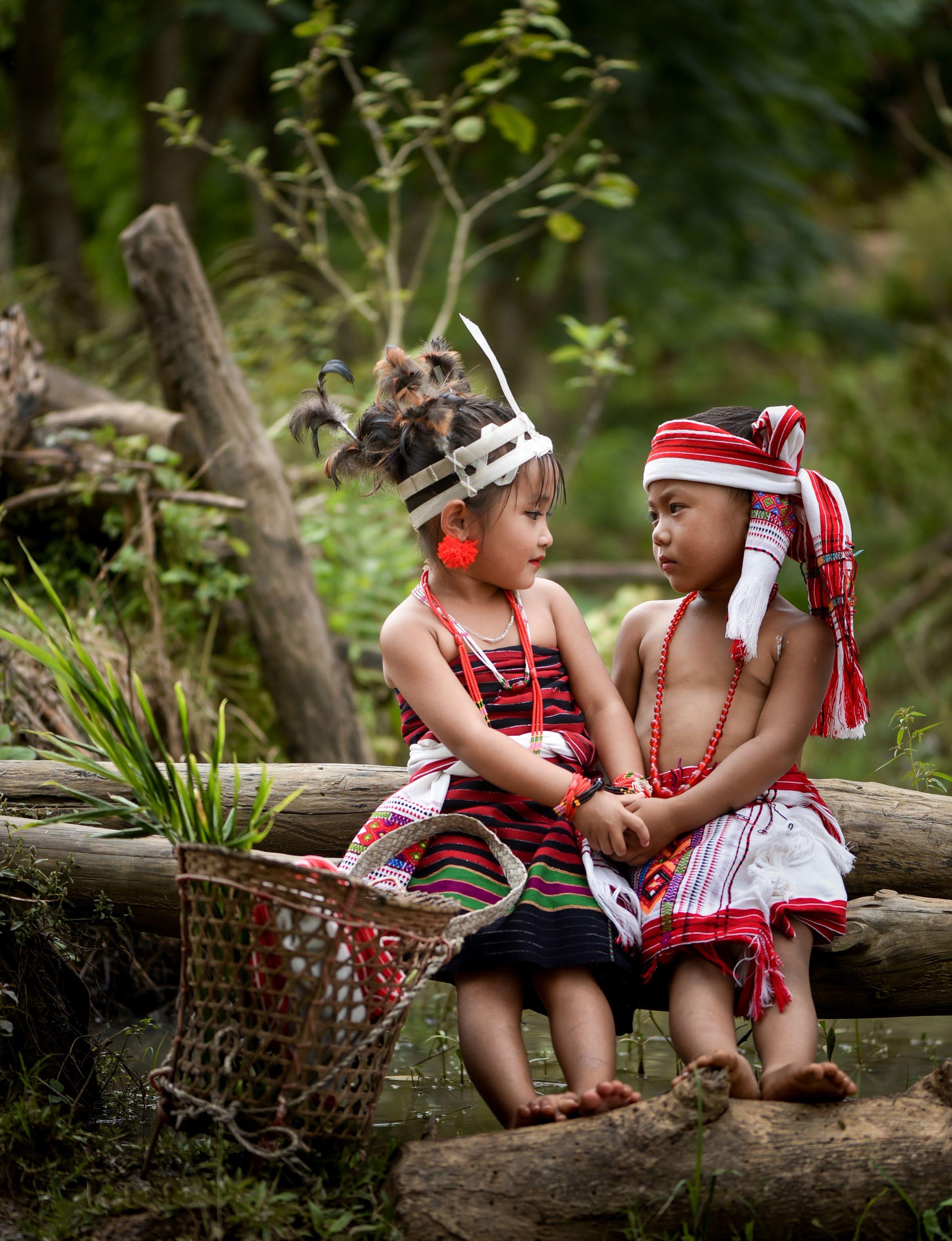

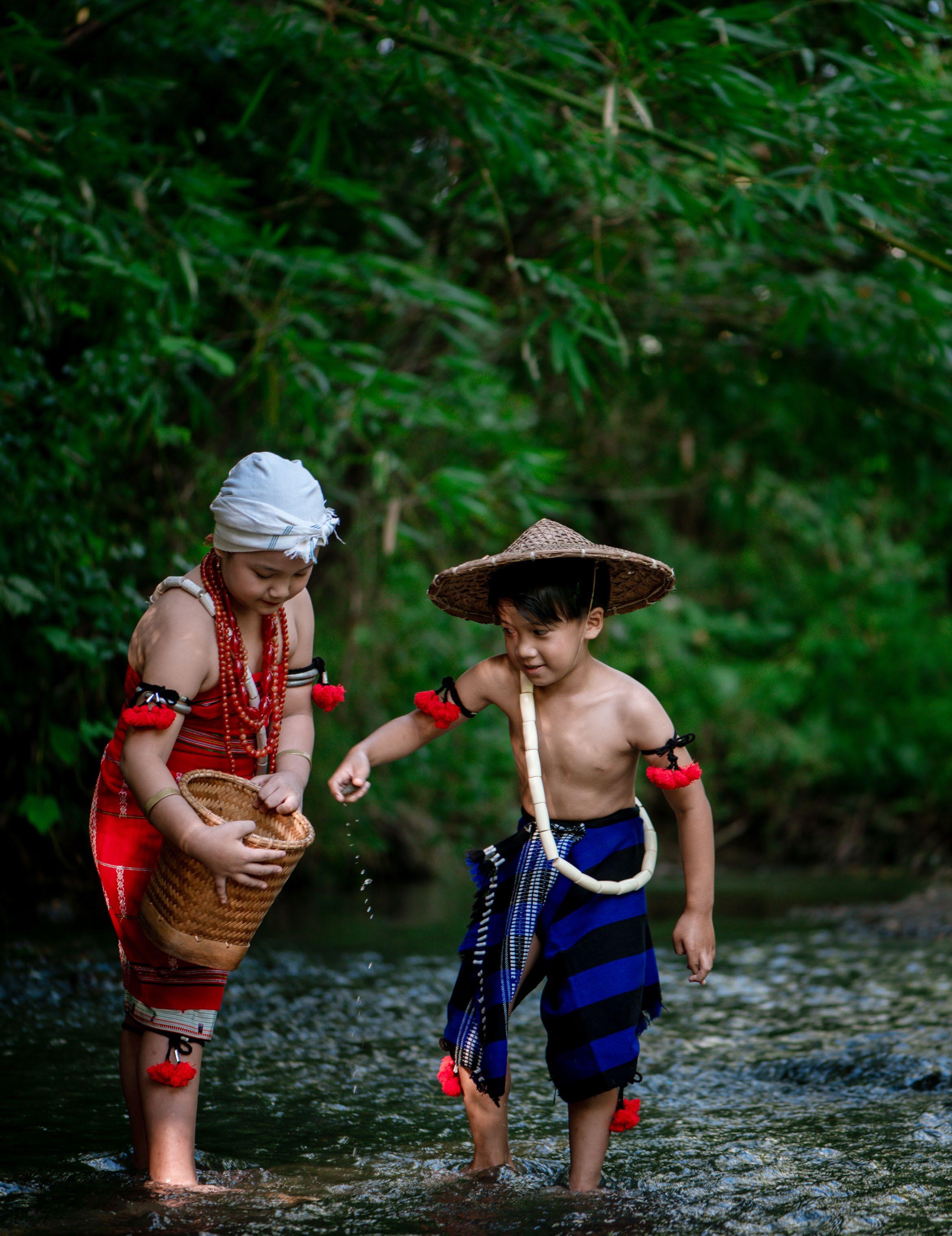

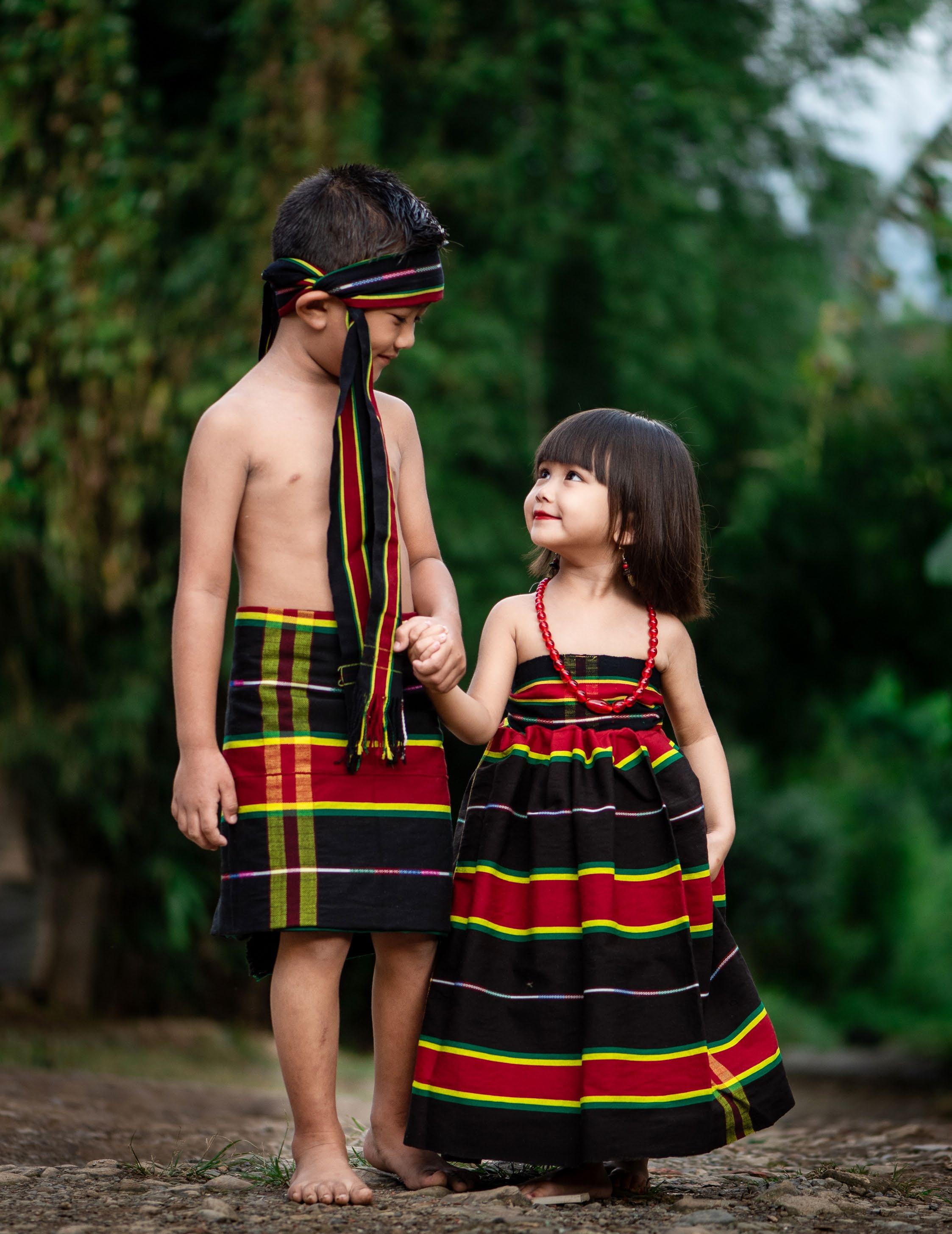


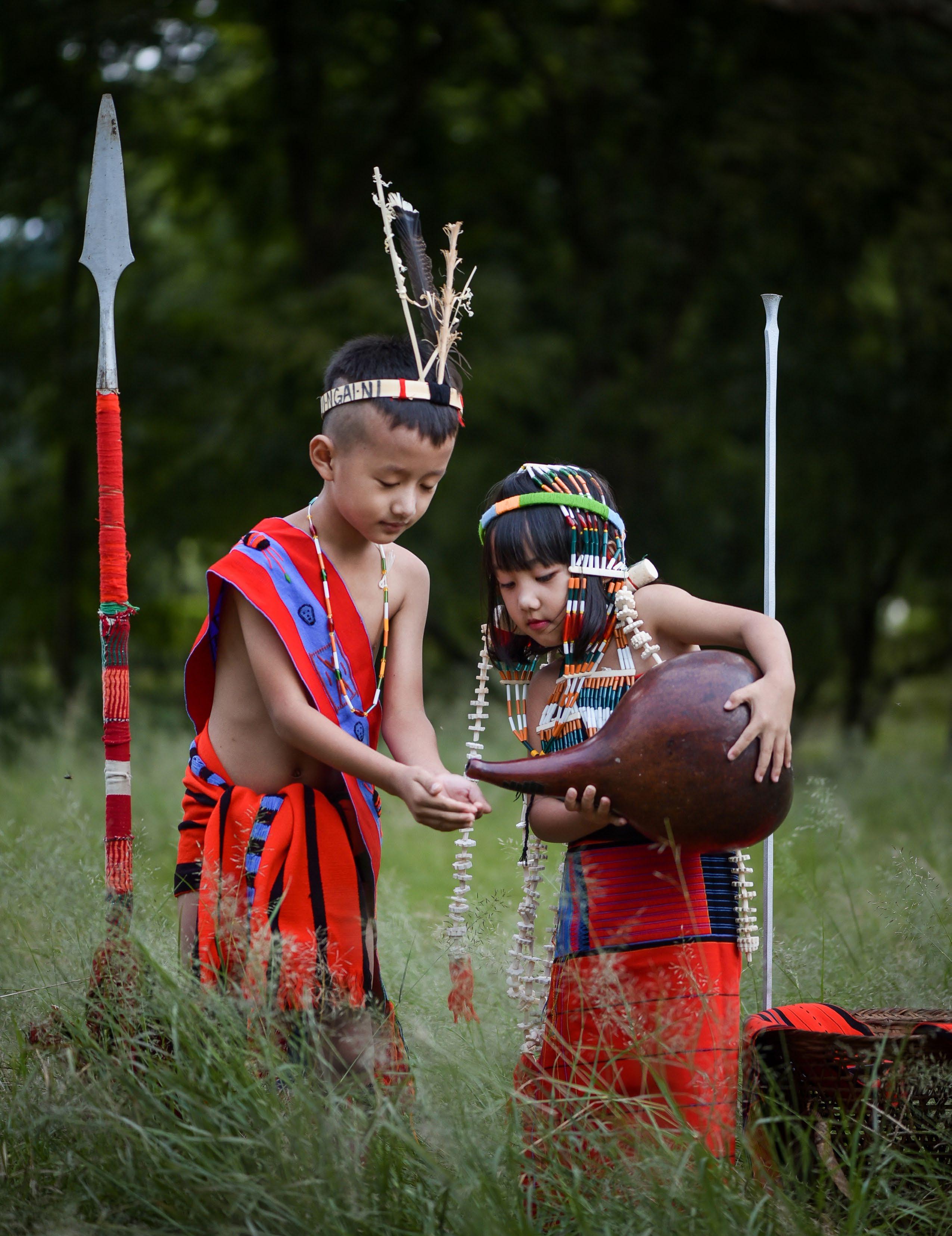
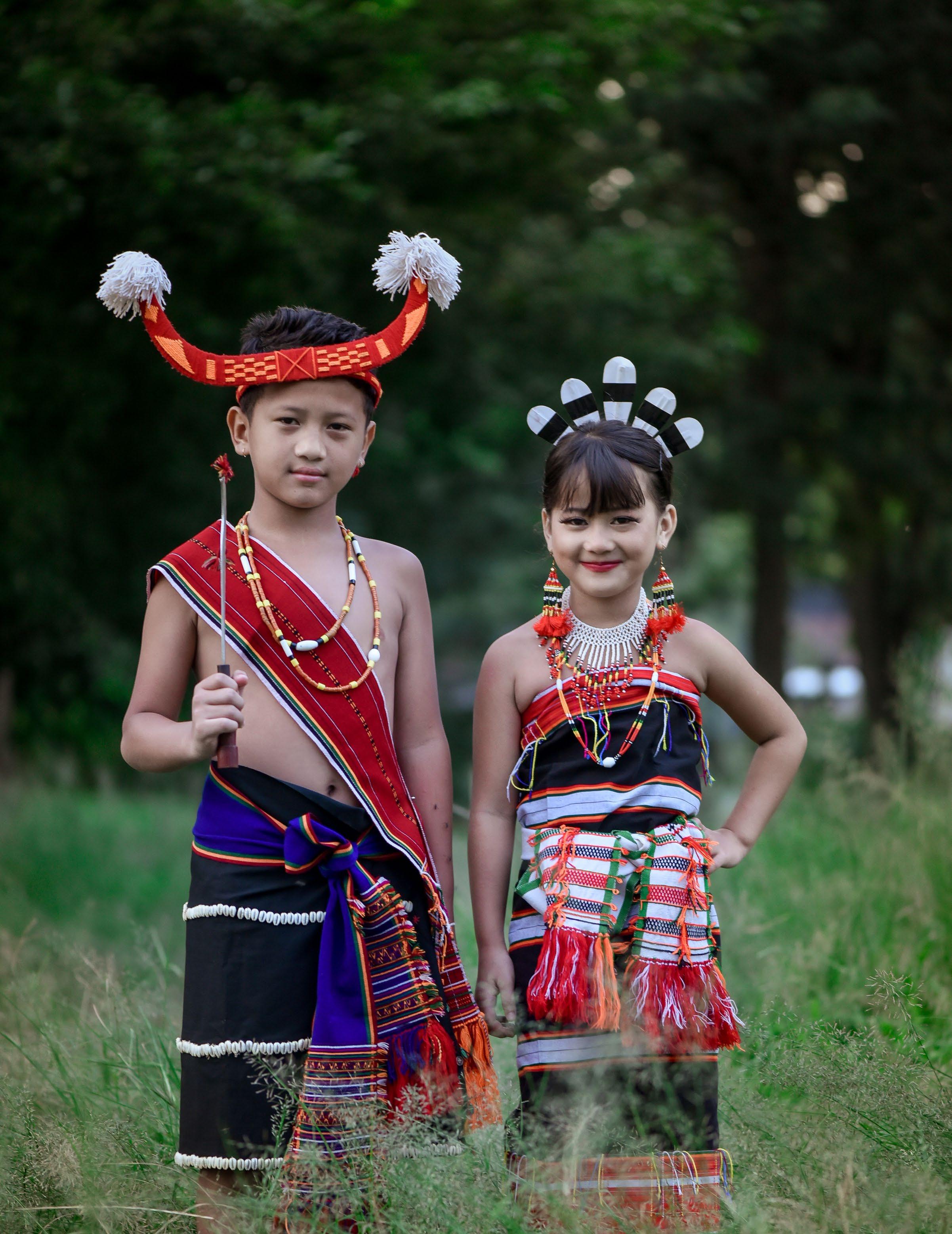
Ningkhalen Hungyo, he belong to Tangkul Naga tribe hailing from Irong Village, Kangpokpi District, Manipur. Photography has been personal to him, he understood how precious photographs can be. When he and his siblings were young, they took a family photo, but with time, the old and strained photo began to blemish, with time his mother’s face was completely torn. It was the sole photograph where his mother was photographed. That’s how he got introduced to photography.
Photography has been close to him since an early age and it has remained a personal joy for him to capture the moments which could be cherished for an endless and enduring time. He is specialized in Wedding and Commercial Photography. Over 9 years of experienced, he has done more than 200 wedding photography all over India.
He used his artistic skills and proficiency to create, make and preserve the memories, which last forever.
Contact him:
HUNGYON PHOTOGRAPHY

Mbc shopping Complex, Imphal 795001
Specialized in Wedding & Commercial Photography.
He! Aramh nac thiule.
Nang namv khou gay tw rana buai!
Baanhraubw rui phungc guang pw e
Chaengvringhmei namh nchu rih riimei rym phunghmei Zawrahpwang!
Paamphau tuang phuithu-riangriau ta ti amuc lou ngam dyng e nangrym gaymei rui!
Nangrym hei rui kwm-ganv ta madanh khang swna piu nic e:
Thing-dui nkowmei ganv e paamphau ganv!
Tinggaanhmei ta nkhwan liat lak pui ganv e duizumei puiliauh rui.
Thingringkhwan swpui ganv, nthahbang chy bangv pui ganv e.
Phuithu-riangriau ta rihngam na puanghpui pwang
Zawrahpwang, nang ta thuanc biuc dyng e.
Lu rui nang ta thuanc bam e ‘Bethlehem khou puanghmei Zawrahpwang’ twna.
Gaydyng e lungning daihmei pwang, Maanseina, nthaw-nruay kaguay nata ti neihlaa loumei pwang e.
He! Anamv rym ,Zawrahpwang rym.
Nang kumc na anamv nic gaymei ric ngam diuc!
Zawrahpwang luchyam hei rui akai Rongmei namv nunc khou namvdih kakaipouc swni akhiam na agai-agi na lungc bammei lwnlung ti hei nchu-nzaengh khang karianh pui tuang e. Gaymei khatnic meic mathiucmei khang gaengmei taanv taanh khang sinic aniu khang ngamv, ningting khatnic kaganv biuh mak bam khou akumh na nang ta akhiam-adiangh khang sianlang lang na bammei pu ta akhiam khang hamhmei khou akumh na nang nzian dianghmei ta athung khang nang pum sw nrai bam nic cho!
About the Author:
Kahimthuan Gangmei, Post-Graduate passed from Manipur University, 2019-2021 batch.
Email: kahimthuang@gmail.com.
 Neptune Barman
Neptune Barman
When my heart broke into pieces, I can`t count, I collected them with my bare hands, arranged them in name of you my love, Looking around I could see the dead world, Looking inside could find broken pieces of heart, Putting each drop of my blood tried to make it alive, Nights passed with storms around, Lonely I lie writing the story of our love, Even if it`s the last day of my life I will still stitch my heart for better to come, If my tears could build a way to heaven I would walk alone to bring you back You are gone, so I will too But our love shall never die.
Neptune Barman